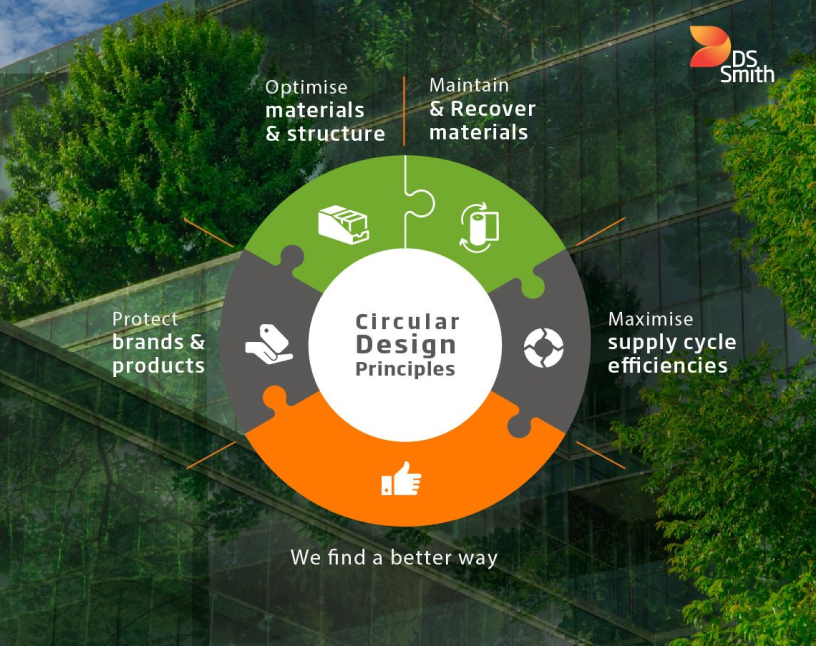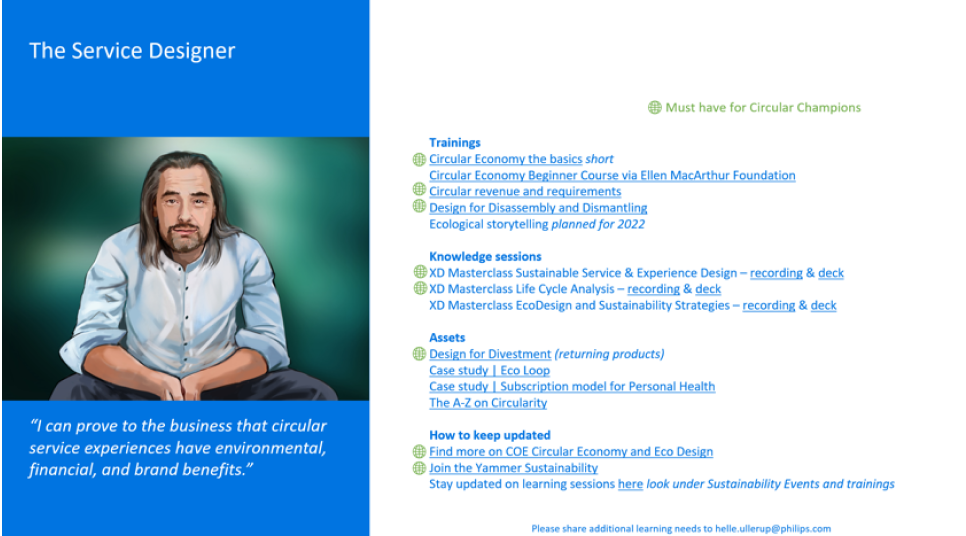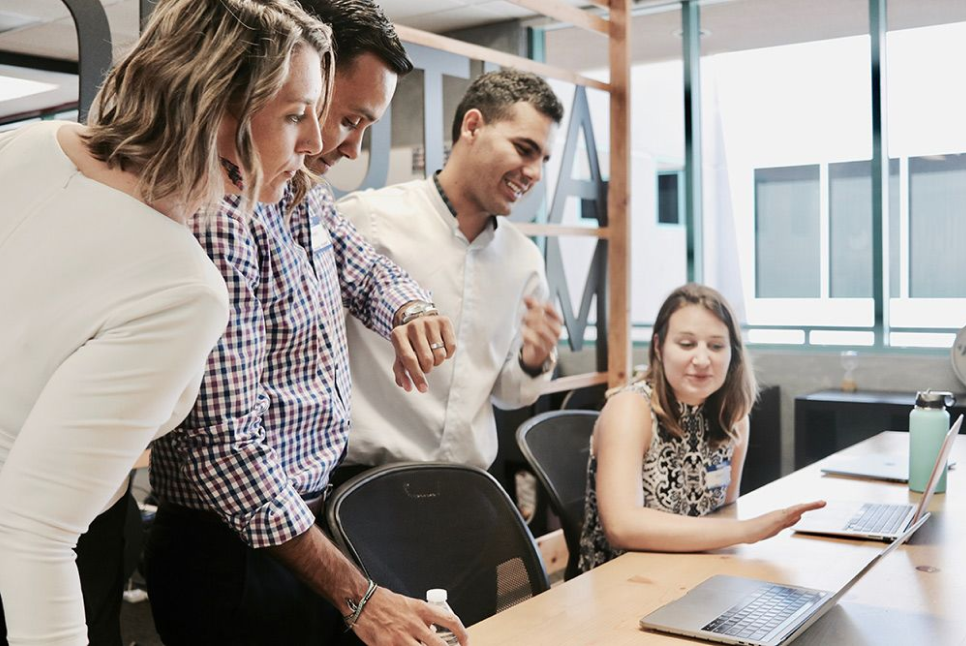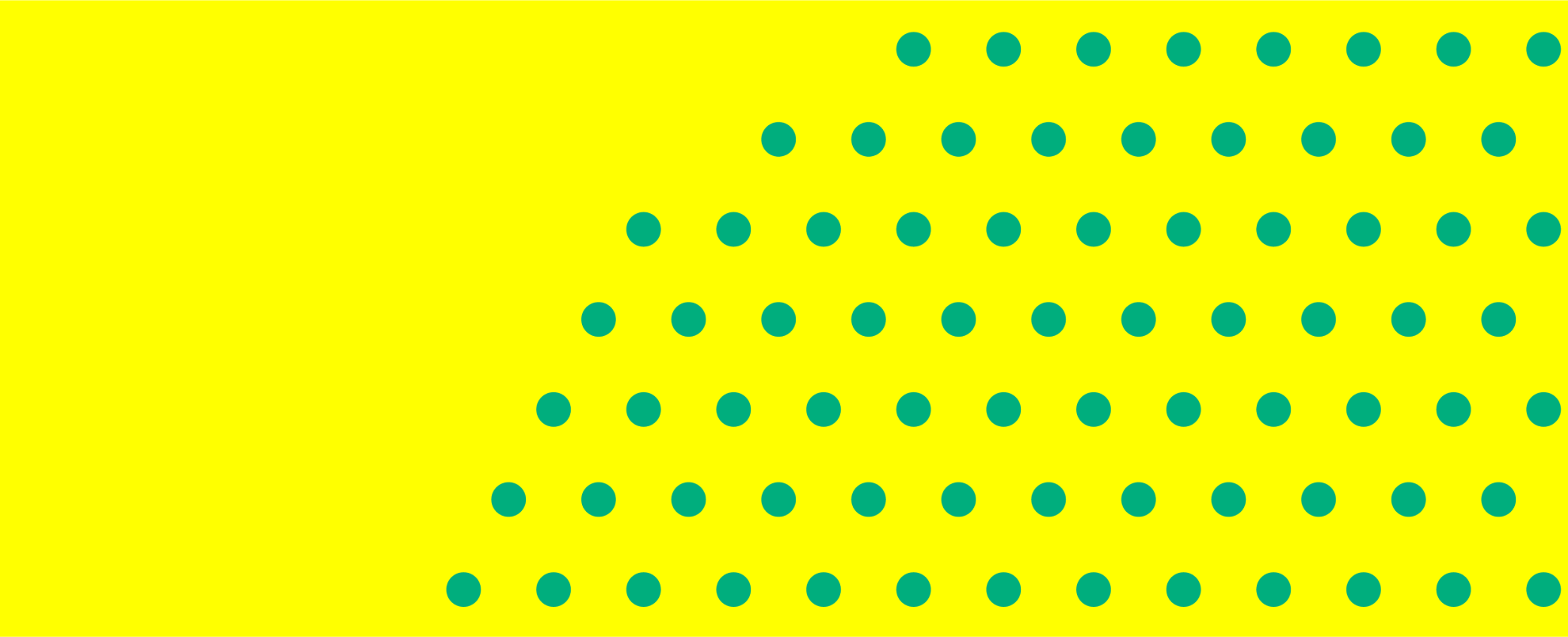Introduction
To effectively implement the principles of a circular economy in innovation processes, teams will need to develop their knowledge of circular design mindsets and practices.
In recent decades, design, and the contribution of designers, have been brought to the heart of many organisations. No longer confined to aesthetics, many organisations are embracing design at a purpose and strategic level.
Through this approach, designers have proved how they can use their skills and training to shift systems and accelerate large-scale transformation. So, when considering how or where to find capabilities in circular design, organisations shouldn’t overlook the existing skills in their design and innovation teams. After all, well-trained, empowered designers helped build our current linear economy – they can help build a circular economy too, providing they are directed towards different outcomes.
For example, service designers frequently visualise complex problems, identify and interpret patterns, create future visions, and prototype new services. Chances are, however, that they currently centre the short-term needs of people and business in a linear economylinear economyAn economy in which finite resources are extracted to make products that are used - generally not to their full potential - and then thrown away ('take-make-waste').. Yet, these are all skills that support effective circular design. At the same time, leveraging existing skills offers a way to engage contemporary design teams, giving deeper purpose to their work and enabling them to contribute to the organisation’s circular economycircular economyA systems solution framework that tackles global challenges like climate change, biodiversity loss, waste, and pollution. It is based on three principles, driven by design: eliminate waste and pollution, circulate products and materials (at their highest value), and regenerate nature. mission or targets.
Of course, not all the expertise required for this transition will readily exist in the organisation. Designers will likely need to develop their craft, building knowledge in topics across both the technical and biological cycles of the circular economy butterfly diagram – including design for longevity and reusereuseThe repeated use of a product or component for its intended purpose without significant modification., disassembly and repairrepairOperation by which a faulty or broken product or component is returned back to a usable state to fulfil its intended use. (see Philips’ webinars on these topics), as well as design for regenerative outcomes. Spaces to learn about how circular design is relevant to a specific context – be it of the organisation, industry, or geography – can also accelerate the implementation processes.
For most organisations, success won’t be about having one or two complete ‘circular designers’. Instead, building an organisation’s circular design capability will be achieved through a mixture of deep individual specialisation in areas like product design, strategic design, business models, or data science, with widespread circular economy understanding that unlocks the expertise of others.
This means developing understanding across the organisation, building new capabilities, teams, departments, and roles to ensure a mindset shift takes place at all levels and divisions.
Circular design learning and training programmes can determine the pace and ambition of an organisation’s circular economy transformation, with informal learning supported by onboarding practices, internal academies, and continuous professional development. Beyond simply being a participant in such programmes, design leaders have the opportunity to create new learning pathways to raise the circular economy literacy of their organisation.
How to approach it
Redefine the role designers play
Think beyond the existing role designers and design teams play and have played in responding to creative briefs, to considering how they might influence or co-shape the design briefs of tomorrow. How can strategic and systemic capacity be built into the scope of design roles from the outset, and how does it materialise when design competencies show up across business functions?
Analyse the skills gap
Map circular design knowledge and skills across the organisation in order to understand where they currently exist and analyse the gap. Look beyond design and innovation functions, including within leadership. What knowledge and skills are needed to create the capabilities to deliver a circular economy project? Which existing design skills can be leveraged for circular outcomes, and which competencies can be developed? This is an exercise that should be repeated regularly as circular economy maturity advances.
Design learning opportunities to bridge the gap
From developing the mindset and knowledge on the circular economy, to understanding latest developments in policy and regulation, to practising enabling tools and frameworks, to communicating the value of circular products and services to clients or customers – what learning opportunities need to be designed to support individuals? This could look like enrolling teams in a circular economy masterclass, or creating a circular design learning series or playbooks with internal and external subject matter experts. Other examples could range from championing circular design ambassadors, to initiating formal or informal practice groups to learn by doing and discussing challenges and opportunities.
“We need to ensure we have people trained so that we put in place the processes and ways of working that are important for each role. As an example, we have translated what circular economy means to different design roles (e.g. Service, UX-UI, Product) and created 13 different learning paths to guide designers on their journey from linear to circular.”
Helle Ullerup, Senior Service Designer, Philips
Connect circular design skills across the organisation
Cross-disciplinary circular economy task forces or clusters within an organisation bring together (formal/informal) leaders with circular design knowledge and skills to build innovation capacity in an interconnected, synergistic, and strategic way that moves away from design as a siloed function, and embeds it upstream in the decision-making.
"Generally, the issue we have is siloed design. So it’s building cross-functional teams of designers and non-designers, because we know we're designing systems rather than products. If you haven't got that ready, that should be a priority."
Alan Potts, former Design & Innovation Director, DS Smith
Examples

Circular design learning journey
By: DS Smith
Scope: Learning journey
Purpose: To upskill and equip designers to apply circular design strategies in their daily design process
Approach: A learning journey including a training programme to translate organisational principles into everyday design process for 700 designers across multiple geographies, as well as inspirational talks. Designers are able to communicate internally and externally the value that a circular economy can generate.

Circular Champions
By: Philips Experience Design
Scope: Fostering innovation
Purpose: Scaling circular knowledge and feeding circular design into business projects
Approach: Circular Champions learn and build skills and confidence through sustainability learning journeys tailored to design disciplines, which they then apply in projects. Designers with circular skills help the business to deliver on customer sustainability needs and help Philips in reaching their 2025 sustainability goals.
“These informal roles help us in scaling circular knowledge and skills amongst our 600+ designers globally. We aim to grow this community until circularity becomes ‘the norm’ and fully integrated in our daily design tasks.” Helle Ullerup, Senior Service Designer, Philips

Circular economy change management programme
By: Arup
Scope: Organisational skills redesign
Purpose: Build organisational momentum on the circular economy and develop the skills to deliver to circular projects
Approach: Arup has launched a global change management programme with the purpose of embedding circular economy in their organisation. People are at the heart of a global strategic rollout plan, including training, toolkits, service development, internal road shows, regional communities of practice, client engagement training sessions, and skills networks to share knowledge throughout Arup.
As part of the skills network, resources, materials, templates, proposals, and tools are accessible to anyone. They also share the success stories, projects, and client experiences happening in almost every region at a given moment. These networks build momentum around the topic and develop the skills needed to deliver these kinds of projects.

Next: Rewrite the rules
Redesigning the guidelines, principles and policies to make it easier for designers to incorporate the principles of a circular economy.

